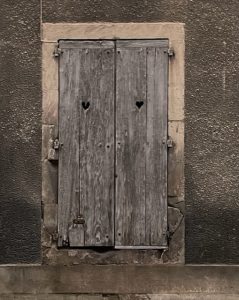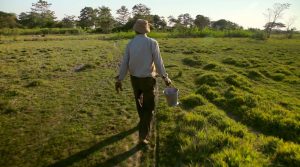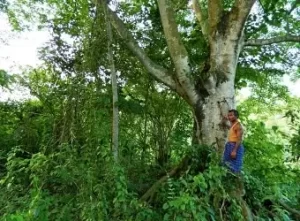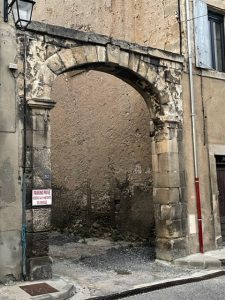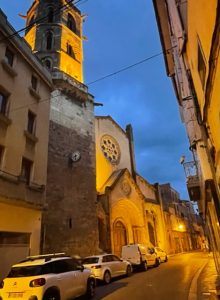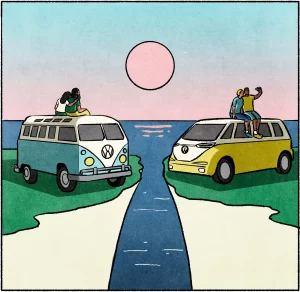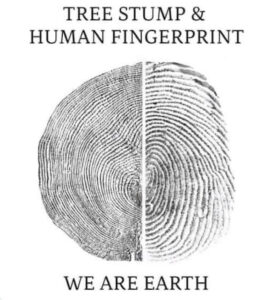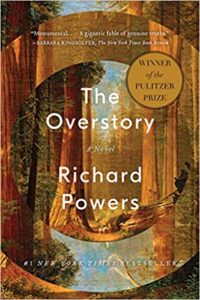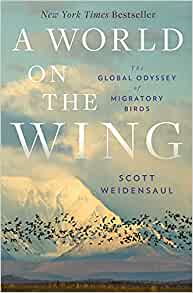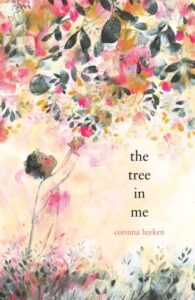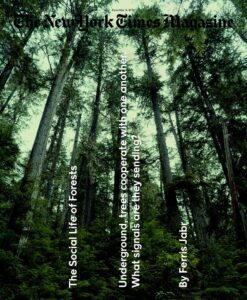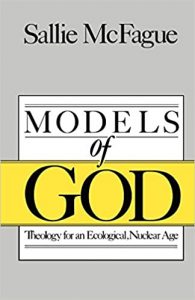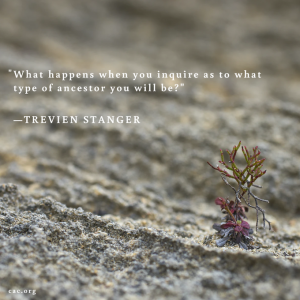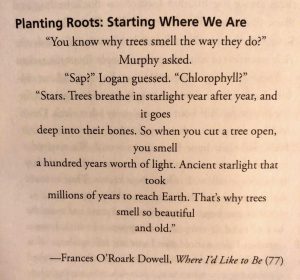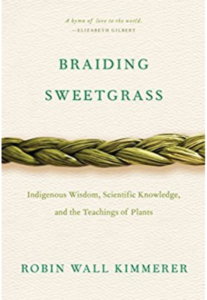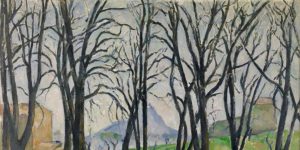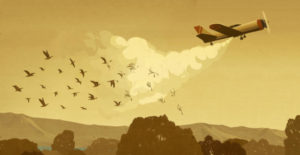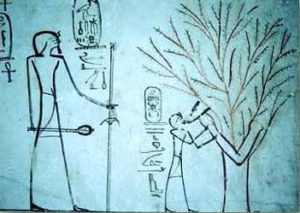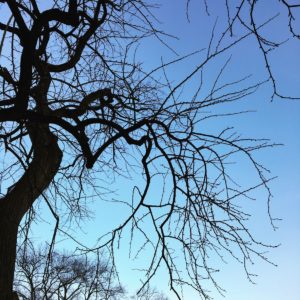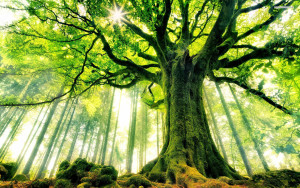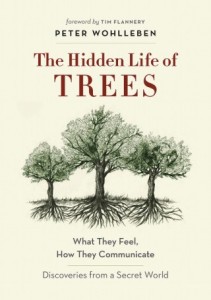Trees
Dayle in Limoux – Day #64
September 7, 2022Captured today walking the old streets in Limoux. ℒℴve ♡
In France, particularly in the Languedoc region, buildings…structures…exteriors…are not allowed to be altered. Interior renovation work must be approved. They protect their history in these sweet villages. No tearing down. No added balconies or windows. Simple upgrades as needed. And you know what else they preserve? Trees.
They don’t cut them down…kill them…to make room for more concrete. They actually build around them. I recently witnessed a construction sight where two mature trees were left standing as a new structure was being built on vacant land around them. Where I lived in Sun Valley, Idaho, trees were an afterthought…worthless. In the way. What did the candidate in Georgia say…”Don’t we have enough trees?” Lord.
Great story today I found about trees and one person making an effort, over his lifetime, to make a difference. 37 years. Remarkable. His beautiful passion and commitment to Gaia.
Posted on social media by ‘How Things are Manufactured.’
“In 1979, Jadav Payeng began planting a tree every day for 37 years — results are stunning.”
Green Matters
Jadav Payeng is the subject of a short documentary called Forest Man, and when you read his story, you’ll understand why. Payeng is basically the living embodiment of the philosophy that one person can make a difference, and the difference he’s made is incredibly inspiring: since 1979, Payeng has been planting a tree everyday on the barren sandbar island in the Brahmaputra river. In that time, he has built a forest reserve covering 1,360 acres, which is now the home to wild animals, birds, and plants that before withered and died on the sandbank.
Jadav Payeng has created 1,360 acres of dense forest and is known as the ‘Forest man of India’ (Photos by Jitu Kalita) Payeng’s forest is now home for five Royal Bengal tigers, over a hundred deer, wild boar, more than a hundred vultures, and several species of birds.
https://www.greenmatters.com/community/2017/08/21/e7htk/man-plants-tree-every-day-for-37-years
“We are, as a species, addicted to story. Even when the body goes to sleep, the mind stays up all night, telling itself stories.” ~Jonathan Gottschall
Thank you Sally Kane from Community Radio for posting this quote. We need more stories. When we line-up on our sides and in our tribes, stories grow through the noise and communicate when interpersonally we can not. It’s how Mariam and Yeshua lectured and spoke to their various communities. And people listened. Still.
And this wall. How beautiful is this. What is its story? Left to stand in its history and creation. How fast this would be destroyed in the U.S., for something new.
And this gorgeous arch, and this abandoned building…the round window. What is their story. The renovation! Would love to tour, see the ancient interior, learn the history, listen to the story.
Saint-Martin’s tonight in Limoux.
Illustrated in the book, ‘The Manuscript.’ Close to 700 pages and I’m almost finished. It’s been a journey; taken so many notes and given so many bridges to my writing and research. And so many ‘You are kidding me’ moments. Radical Compassion. 💙 Here, Mariam is seen lecturing the King and Queen of Marseilles. She spent time here after her her boat sailed into to Gaul (ancient France) from the Holy Land. From the painting by Rene d’Anjou, 1408-1480.
’I felt my soul ascend and saw the first great bough which bears the fruit of Love and Compassion, the foundation of all things.’ -Μαρία ἡ Μαγδαληνή (Mariam Magdal)
p.613, 614″Feelings are an important means of expression. Control them and become realistic or let them control you and stay within your illusions. All emotions have two sides to them. At the other side of joy you’ll find malice. Compassion is the heart’s answer to sorrow. Without feelings man would not be able to experience empathy towards another human being. Feelings unite people. People are baptized in water. The time has come to baptist with fire. Only what is true will survive the fire. Everything unclean and false shall perish.”
[…]
“What is the fifth dimension?”
“You wouldn’t be able to understand it yet.”
“Please, help me to understand it.”
[Silence]
“Compassion.”
“Compassion?”
“Compassion is the fifth dimension.”
‘When the moon is in the Seventh House
And Jupiter aligns with Mars
Then peace will guide the planets
And love will steer the ☆☆¸.•*¨*•☆☆•*¨*•.¸¸☆☆’s.
https://www.youtube.com/watch?v=VlrQ-bOzpkQ
Bonne nuit.
♥
\ (•◡•) /
Unfolding catastrophe.
June 5, 2021Social media post by Tzeporah Berman on May 27th:
“Please…just….please act now. This should be illegal. I saw stumps of 1000 year old trees with flagging tape on 2000 year old yellow cedars. It’s like destroying Pantheon or the Sistine Chapel to make a buck. Enough already.”
Tzeporah lives in Vancouver and is the International Program Director for https://www.stand.earth. She is also an adjunct professor at York University and the chair for Fossil Fuel Non-Proliferation Treaty…https://fossilfueltreaty.org
Fresh Air
May 4th, 2021
Trees Talk To Each Other. ‘Mother Tree’ Ecologist Hears Lessons For People, Too
Trees are “social creatures” that communicate with each other in cooperative ways that hold lessons for humans, too, ecologist Suzanne Simard says.
Simard grew up in Canadian forests as a descendant of loggers before becoming a forestry ecologist. She’s now a professor of forest ecology at the University of British Columbia.
Trees are linked to neighboring trees by an underground network of fungi that resembles the neural networks in the brain, she explains. In one study, Simard watched as a Douglas fir that had been injured by insects appeared to send chemicalwarning signals to a ponderosa pine growing nearby. The pine tree then produced defense enzymes to protect against the insect.
“This was a breakthrough,” Simard says. The trees were sharing “information that actually is important to the health of the whole forest.”
In addition to warning each other of danger, Simard says that trees have been known to share nutrients at critical times to keep each other healthy. She says the trees in a forest are often linked to each other via an older tree she calls a “mother” or “hub” tree.
THIS:
[Trees] get old. They do eventually decline. And dying is a process, and it takes a long, long time. It can take decades for a tree to die. In the process of dying, there’s a lot of things that go on. And one of the things that I studied was where does their energy — where does the carbon that is stored in their tissues — where does it go? And so we label some trees with carbon dioxide — with C13, which is a stable isotope — and we watched as we actually cause these trees to die. We stress them out by pulling their needles off and attacking them with budworms and so on. And then we watched what happened to their carbon.
And we found that about 40% of the carbon was transmitted through networks into their neighboring trees. The rest of the carbon would have just dispersed through natural decomposition processes … but some of it is directed right into the neighbors. And in this way, these old trees are actually having a very direct effect on the regenerative capacity of the new forest going forward.
This is a completely different way of understanding how old trees contribute to the next generations — that they have agency in the next generations. And our practices of salvage logging to get rid of dying trees, or trees that have just died or have been burned in wildfires — if we go in and cut them right away, we’re actually short-circuiting that natural process.
Full interview with Dave Davies/NPR’s Fresh Air:
One of the books recommended by President Barack Obama in conversation with the NYTimes Ezra Klein:
“A book I just read, “The Overstory” by Richard Powers, it’s about trees and the relationship of humans to trees. And it’s not something I would have immediately thought of, but a friend gave it to me. And I started reading it, and it changed how I thought about the earth. And it changed how I see things, and that’s always, for me, a mark of a book worth reading.”
Full interview: https://www.nytimes.com/2021/06/01/opinion/ezra-klein-podcast-barack-obama.html
Eight trees were destroyed in May in name of capitalism and concrete next to my place in Sun Valley, Idaho. Unnecessary. And tragic. All were mature, healthy trees. When will we stop? Will we ever? -dayle
‘Unless someone like you cares a whole awful lot,
nothing is going to get better. It’s not.’ -The Lorax
NPR/Dave Davies
Naturalist Traces The ‘Astounding’ Flyways Of Migratory Birds
Did you know that when some migratory birds prepare for flights that can take them thousands of miles, their intestines and digestive organs actually shrink while their heart, lung and leg muscles can double in size? That’s just one of the amazing facts you can learn from our guest, Scott Weidensaul. He spent decades studying migratory birds, reporting on and writing about them and doing fieldwork and tracking and conservation efforts. The scale of bird migration is staggering, involving billions of birds, and the diversity of the species’ mating, nesting and flying habits is awe inspiring. In a new book, Weidensaul writes about what he calls this majestic global pageant and about the threats the animals face. One study found that since 1970, roughly 30% of North American birds have disappeared, more than 3 billion of them. Scott Weidensaul has written 30 previous books, and his articles have appeared in Audubon, National Wildlife and other publications. He co-founded Project SNOWstorm, which tracks and studies snowy owls and is a founder of the Critical Connections project, which is tracking the migration of birds that breed on national park lands in Alaska. His new book is “A World On The Wing: The Global Odyssey Of Migratory Birds.” He joins us from his home in Milton, N.H.
https://www.npr.org/2021/03/29/982232107/naturalist-traces-the-astounding-flyways-of-migratory-birds
🌺
April 20, 2021‘Love trees? Love love? “The Tree in Me” is for you – a tender painted poem about growing our capacity for joy, strength, and love.’ -Maria Popova
Walt Whitman, who considered trees the profoundest teachers in how to best be human, remembered the woman he loved and respected above all others as that rare person who was “entirely herself; as simple as nature; true, honest; beautiful as a tree is tall, leafy, rich, full, free — is a tree.”
As the child looks up to face a young woman — who could be a mother or a sister or a first love or the school janitor or the Vice President — the book ends with a subtle affirmation of William Blake’s timeless tree-tinted insistence that we see not what we look at but what we are.
The tree in me
is seed and blossom,
bark and stump…
part shade,
and part sun.
brain pickings.org
When trees talk…
December 4, 2020Fungal threads link nearly every tree in a forest — even trees of different species. Carbon, water, nutrients, alarm signals and hormones can pass from tree to tree through these subterranean circuits.
Resources tend to flow from the oldest and biggest trees to the youngest and smallest. Chemical alarm signals generated by one tree prepare nearby trees for danger.
https://www.nytimes.com/interactive/2020/12/02/magazine/tree-communication-mycorrhiza.html
🌱
October 13, 2020‘Trees feel pain, touch, emotion.’ -Peter Wohlleben, Author
The Hidden Life of Trees, What They Feel, How They Communicate
The Community Library virtual broadcast, Oct. 13th, 2020
Ketchum, Idaho
‘The forest is a social network.They maintain an inner balance. They budget their strength carefully. Apparently, the trees synchronize their performance so that they are all equally successful.’
What Happens When You Plant a Tree?
May 23, 2020For all its presumed innocence, this way of life lived by well-off North Americans is both unjust to those who cannot attain this lifestyle and destructive of the very planet that supports us all.
—Sallie McFague
Sallie McFague was an American feminist Christian theologian, best known for her analysis of how metaphor lies at the heart of how we may speak about God. She applied this approach in particular to ecological issues, writing extensively on care for the earth as if it were God’s “body.”
‘In this award-winning text, theologian Sallie McFague challenges Christians’ usual speech about God as a kind of monarch. She probes instead three other possible metaphors for God as mother, lover, and friend.’
Center for Action & Contemplation
While we may continue to practice physical distancing from other humans, most of us can still safely spend time in nature. The Journal of Health Psychology confirms what Franciscans and mystics have long known: interacting with nature is a great stress reliever. Just thirty minutes of gardening lowers the cortisol released during stress-induced fight-or-flight responses. Today’s practice, written by poet, writer, and educator Trevien Stanger for the book Order of the Sacred Earth, invites us to make a very specific contemplative contribution by planting trees.
Ethnobotanist, author, and Potawatami elder Robin Kimmerer asserts, “We need acts of restoration, not only for polluted waters and degraded lands, but also for our relationship to the world. We need to restore honor to the way we live, so that when we walk through the world we don’t have to avert our eyes with shame, so that we can hold our heads high and receive the respectful acknowledgment of the rest of [the] earth’s beings.” [1] . . .
I contend that every individual can participate in [the] Great Turning, and that one of the great challenges of our time is for each of us to figure out how and where we plug into this psycho-spiritual current. . . . I, for one, plant trees. . . . In my more recent work as an environmental studies professor at a community college in Vermont, I’ve had a hand in planting just shy of 100,000 trees over the past 12 years. . . .
What happens when you plant a tree? What happens when you wield a shovel in one hand (a human artifact) and a tree (a provisional mystery) in the other? What happens when you dig a hole (a Kali-like destruction) and plant a tree within it (an act of creativity)? What happens when you learn about your local ecology not just as an observer, but also as a participant? What happens when you embrace the wildness of a tree-being and integrate it into the semi-wild streets and streams of your local community? What happens when you crack open your isolated sense of self and plant within your heart this symbol of our ever-branching inter-being? What happens when you consider your actions in terms of your ecological and cultural legacy? What happens when you move beyond your concerns of today and inquire as to what type of ancestor you will be? Nelson Henderson posits that “. . . one true meaning of life is to plant trees under whose shade you do not expect to sit.” [2] Under whose shade do you sit beneath today? Whose shade shall you help gift for tomorrow?
[1] Robin Wall Kimmerer, Braiding Sweetgrass: Indigenous Wisdom, Scientific Knowledge, and the Teachings of Plants (Milkweed Editions: 2013), 195.
[2] Wes Henderson shared his father’s advice in Under Whose Shade: A Story of a Pioneer in the Swan River Valley of Manitoba (W. Henderson & Associates: 1986, ©1982).
Trevien Stanger, “Tree Planter,” Order of the Sacred Earth: An Intergenerational Vision of Love and Action, Matthew Fox, Skylar Wilson, and Jennifer Listug (Monkfish Book Publishing Company: 2018), 184-186.
Image credit: Legend of St. Francis: 15. Sermon to the Birds (fresco detail), artist unknown, formerly attributed to Giotto di Bondone, c. 1297–1299, Upper Basilica of San Francesco d′Assisi, Assisi, Italy.
Read aloud.
April 17, 2020Starlight. Ancient, starlight.
Hope is the main impulse of life. —Ilia Delio
Mystical hope. -Cynthia Bourgeault
?
Shhhhhh…the trees are speaking.
November 8, 2019Robin Wall Kimmerer:
In the old times, our elders say, the trees talked to each other. They’d stand in their own council and craft a plan. But scientists decided long ago that plants were deaf and mute, locked in isolation without communication. The possibility of conversation was summarily dismissed. Science pretends to be purely rational, completely neutral, a system of knowledge-making in which the observation is independent of the observer. And yet the conclusion was drawn that plants cannot communicate because they lack the mechanisms that animals use to speak. . . . But pollen has been carried reliably on the wind for eons, communicated by males to receptive females to make . . . nuts. If the wind can be trusted with that fecund responsibility, why not with messages?
There is now compelling evidence that our elders were right—the trees are talking to one another. They communicate via pheromones, hormonelike compounds that are wafted on the breeze, laden with meaning. Scientists have identified specific compounds that one tree will release when it is under the stress of insect attack—gypsy moths gorging on its leaves or bark beetles under its skin. The tree sends out a distress call: “Hey, you guys over there? I’m under attack here. You might want to raise the drawbridge and arm yourselves for what is coming your way.” The downwind trees catch the drift, sensing those few molecules of alarm, the whiff of danger. This gives them time to manufacture defensive chemicals. . . . The individual benefits, and so does the entire grove. Trees appear to be talking about mutual defense. . . . There is so much we cannot yet understand with our limited human capacity. Tree conversations are still far above our heads.
Some studies of mast fruiting have suggested that the mechanism for synchrony comes not through the air, but underground. [1] The trees in a forest are often interconnected by subterranean networks of mycorrhizae, fungal strands that inhabit tree roots. The mycorrhizal symbiosis enables the fungus to forage for mineral nutrients in the soil and deliver them to the tree in exchange for carbohydrates. The mycorrhizae may form fungal bridges between individual trees, so that all the trees in a forest are connected. These fungal networks appear to redistribute the wealth of carbohydrates from tree to tree. A kind of Robin Hood, they take from the rich and give to the poor so that all the trees arrive at the same carbon surplus at the same time. They weave a web of reciprocity, of giving and taking. In this way, the trees all act as one because the fungi have connected them. Through unity, survival. All flourishing is mutual.
Fr. Richard Rohr, Center for Action & Contemplation:
‘For too long science and faith fell into the “sin of certainty,” each claiming Truth only for themselves and ignoring the beautifully symbiotic relationship that exists between them. Scientists like Robin Wall Kimmerer are an essential part of the Great Turning, dissolving the artificial binaries that have walled them off from one another. May we all have minds and hearts open enough to integrate the wisdom of our spiritual elders.’
Are trees social beings? In this international bestseller, forester and author Peter Wohlleben convincingly makes the case that, yes, the forest is a social network. He draws on groundbreaking scientific discoveries to describe how trees are like human families: tree parents live together with their children, communicate with them, support them as they grow, share nutrients with those who are sick or struggling, and even warn each other of impending dangers. Wohlleben also shares his deep love of woods and forests, explaining the amazing processes of life, death, and regeneration he has observed in his woodland.
After learning about the complex life of trees, a walk in the woods will never be the same again.
Spontaneous Enthusiasm
December 23, 2017The blade of grass may wither and petals fall from the flower, but the idea, “the word of the Lord…Gaia…endureth forever.
I know that all things are good when rightly used. I enter the game of living, then, with joyful anticipation, with spontaneous enthusiasm, and with the determination to play the game well and to enjoy it.”
-Ernest Holmes
Silent friends.
June 7, 2017For you time is never lost.
‘Perhaps because they have been our silent friends since the dawn of humanity and remain the oldest living things in the world, trees have been central to our ancient mythology and our sensemaking metaphors of science. So powerful is our bond that they can save our lives and we theirs.
That abiding bond is what Spanish multimedia storytelling of Kauri celebrates in the beautiful short film The Silent Friends.’
[Maria Popova]
A light from within…
May 2, 2017‘As the sun spilled over the face of the [tree], I realized that just as gravity will always pull things to the Earth’s center, the life-force of the Universe will always emanate from its center into the world.’
-Mark Nepo
The day for Earth.
April 22, 2017Mark Nepo:
Like leafless trees waiting for morning, something as great and as constant as the Earth holds us up and turns us ever so slowly toward the light. Our task is only to be rooted and patient.
Mysterious as it is – no matter our pain or excitement, our drama or circumstance – – all that we could hope for is here. We lack nothing.
~
The second-to-last tree.
April 9, 2017Easter Island was the home to a thriving community, thousands of people living good lives.
One by one, though, the trees on this isolated island were cut down. They were cut down for fuel, or to make tools, or boats.
And finally, the last tree was gone. And the population went extinct. (Jared Diamond)
My question, though, isn’t really about the last tree. It’s about the second-to-last tree.
When someone cut it down, how did the community react? Were they afraid to speak up? Was it made clear that the social and societal costs of cutting down a tree were severe, so severe that no one would even contemplate cutting down the last tree?
And maybe they could have started this cultural norm with the third-to-last tree. Or even sooner.
Culture is the most powerful tool we have to change behavior. All around us we see people selfishly taking from the commons, eroding our standards, chopping down trees (real and metaphorical) we depend on.
What will we say the next time someone comes with an ax?
-Seth Godin
Mark Nepo
April 5, 2017‘How do trees deal with injustice? They grow a branch whoever they were cut.’
♥
‘Why do I keep running, when I have no interest in moving?’
‘…never holds.’
October 12, 2016I envy the tree,
how it reaches
but never holds.
‘Things that matter come and go, but being touched and feeling life move on, we tend to cling and hold on, not wanting anything to change. Of course, this fails and things do change. Often, we are stubborn enough to go after what we think is leaving, trying to manipulate and control the flow of life. Of course, this fails, too.
We can’t stop life from flowing. So we are left with feeling what was and what is, and we call the difference loss. But all the clinging and holding on only makes it worse. Now, new things come, and some of us anticipate the loss and just let the things of life go by without feeling them at all.
I have done all these things, but when clear enough and open enough, I try to let things in, to let things touch me. I try not to poke and pull at them as they move through. It doesn’t eliminate loss, but when trusting enough to let this happen, I am tuned like a harp held up to the wind.’
-Mark Nepo
Nonhuman consciousness.
October 3, 2016“…they speak a sophisticated silent language, communicating complex information via smell, taste, and electrical impulses. […] The role forests play in making our world the kind of place where we want to live.” As we’re only just beginning to understand nonhuman consciousnesses, what emerges from Wohlleben’s revelatory reframing of our oldest companions is an invitation to see anew what we have spent eons taking for granted and, in this act of seeing, to care more deeply about these remarkable beings that make life on this planet we call home not only infinitely more pleasurable, but possible at all.”
[…]
“Why are trees such social beings? Why do they share food with their own species and sometimes even go so far as to nourish their competitors? The reasons are the same as for human communities: there are advantages to working together. A tree is not a forest. On its own, a tree cannot establish a consistent local climate. It is at the mercy of wind and weather. But together, many trees create an ecosystem that moderates extremes of heat and cold, stores a great deal of water, and generates a great deal of humidity. And in this protected environment, trees can live to be very old. To get to this point, the community must remain intact no matter what. If every tree were looking out only for itself, then quite a few of them would never reach old age. Regular fatalities would result in many large gaps in the tree canopy, which would make it easier for storms to get inside the forest and uproot more trees. The heat of summer would reach the forest floor and dry it out. Every tree would suffer.
Every tree, therefore, is valuable to the community and worth keeping around for as long as possible. And that is why even sick individuals are supported and nourished until they recover. Next time, perhaps it will be the other way round, and the supporting tree might be the one in need of assistance.”
Maria Papova/brainpickings
The Secret Life of Trees: The Astonishing Science of What Trees Feel and How They Communicate
Gaia.
February 9, 2016“Every tree, every plant, has a spirit. People may say that the plant has no mind. I tell them that the plant is alive & conscious. A plant may not talk, but there is a spirit in it that is conscious, that sees everything, which is the soul of the plant, its essence, what makes it alive. The channels through which the water & sap move are the veins of the spirit.”
– Pablo Amaringo
